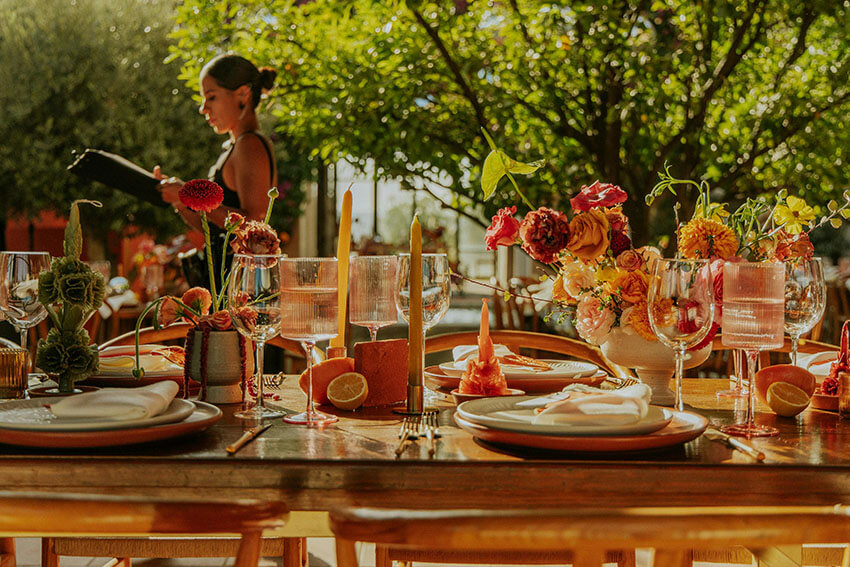Fundraising dinners are a powerful way to raise money while bringing people together in a meaningful, elegant setting. Whether you’re supporting a nonprofit, a local cause, or a community initiative, a well-planned dinner event can leave a lasting impact—both emotionally and financially. But to be successful, it needs to be more than just a meal.
Here’s what you need to know before organizing a fundraising dinner that truly delivers results.
Define Your Cause and Your Goal
Before anything else, be clear about what you’re raising money for. Potential donors want to understand the cause and how their contributions will make a difference.
Ask yourself:
- What exactly is the purpose of the event?
- How much do you hope to raise?
- How will the money be used?
Clearly defining your goal allows you to craft your message and create a budget that aligns with realistic fundraising expectations.
Choose the Right Format
Not every fundraising dinner needs to be black-tie. The format should match your audience and budget.
Options include:
- Formal gala dinner: With plated courses, speakers, and a seated program
- Casual buffet or picnic dinner: More affordable and relaxed, good for community-based causes
- Themed dinner night: Adds entertainment value and engagement
- Hybrid event: In-person dining with a livestream for remote supporters
Choose the format that best fits your target donors and your fundraising style.
Select a Strategic Venue
The venue should be convenient, welcoming, and appropriate for the atmosphere you want to create. Consider:
- Seating capacity and accessibility
- Kitchen facilities or catering requirements
- Parking and transportation
- Ambiance that supports your message
Negotiate with venues to reduce costs, or consider a donated space from a community partner.
Create a Realistic Budget
It’s important to raise money—but also to avoid spending too much to get there.
Typical budget categories:
- Venue rental
- Catering or food service
- Decor and lighting
- Entertainment or speakers
- Promotion and printing
- Staff and volunteers
Look for opportunities to reduce costs with in-kind donations or community sponsorships.
Craft Your Message Carefully
People give when they feel emotionally connected. Your storytelling should:
- Highlight real stories or testimonials from people impacted by your cause
- Show clear, tangible results from past work
- Use visuals like photos or short videos
- Be repeated consistently across invitations, speeches, signage, and media
Don’t just tell people what you do—show them why it matters.
Secure Sponsors and Community Support
Corporate sponsors and local businesses can help cover costs or provide services, prizes, or gifts in exchange for exposure.
Steps to attract sponsors:
- Create a professional sponsorship packet
- Offer branding opportunities (e.g., logo on menus, banners, stage)
- Highlight the audience demographics they’ll reach
- Follow up with personalized thank-you notes and sponsor recognition during the event
Also, consider asking businesses to donate goods for a raffle or silent auction.
Build an Engaging Program
Keep your evening structured and purposeful. A typical flow might include:
- Guest arrival and cocktail hour
- Opening remarks or welcome
- Meal service (with background music)
- Storytelling or video presentation
- Live auction or appeal for donations
- Entertainment or performance
- Closing message or thank-you
Avoid long gaps in the program, and be sure to have an emcee or host to keep the energy flowing.
Make Giving Easy
Create multiple ways for attendees to give:
- Pledge cards at each table
- QR codes linking to online donation pages
- Silent or live auctions
- Text-to-donate platforms
Clearly explain how the money will be used, and make sure your donation process is simple and secure.
Add a Special Touch
Small thoughtful details help guests feel appreciated:
- Personalized place cards or table notes
- A printed program with photos and mission information
- Thank-you gifts like candles, keychains, or donation certificates
- A volunteer team to assist guests and answer questions
Hospitality makes a difference—when people feel taken care of, they’re more likely to give.
Follow Up After the Event
Once the event is over, your job isn’t done.
Follow up with:
- A thank-you email or handwritten note to every guest
- A final donation update showing the total raised
- A photo gallery or short video recap
- An invitation to stay involved with future events
This turns one-time donors into long-term supporters and builds momentum for the next fundraiser.
Final Thoughts
A fundraising dinner is more than just an event—it’s a chance to connect hearts, raise awareness, and rally support around a cause that matters. With the right preparation, a strong message, and a thoughtful guest experience, you can create an evening that’s both successful and deeply meaningful.
